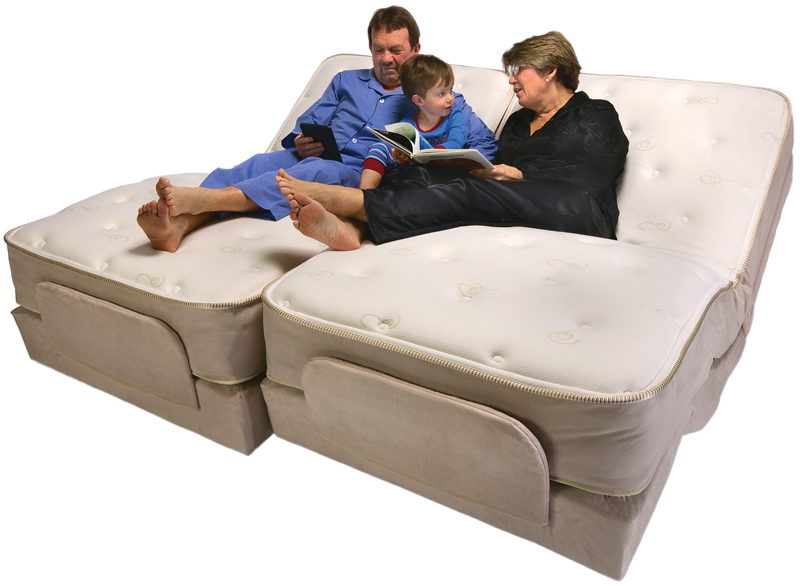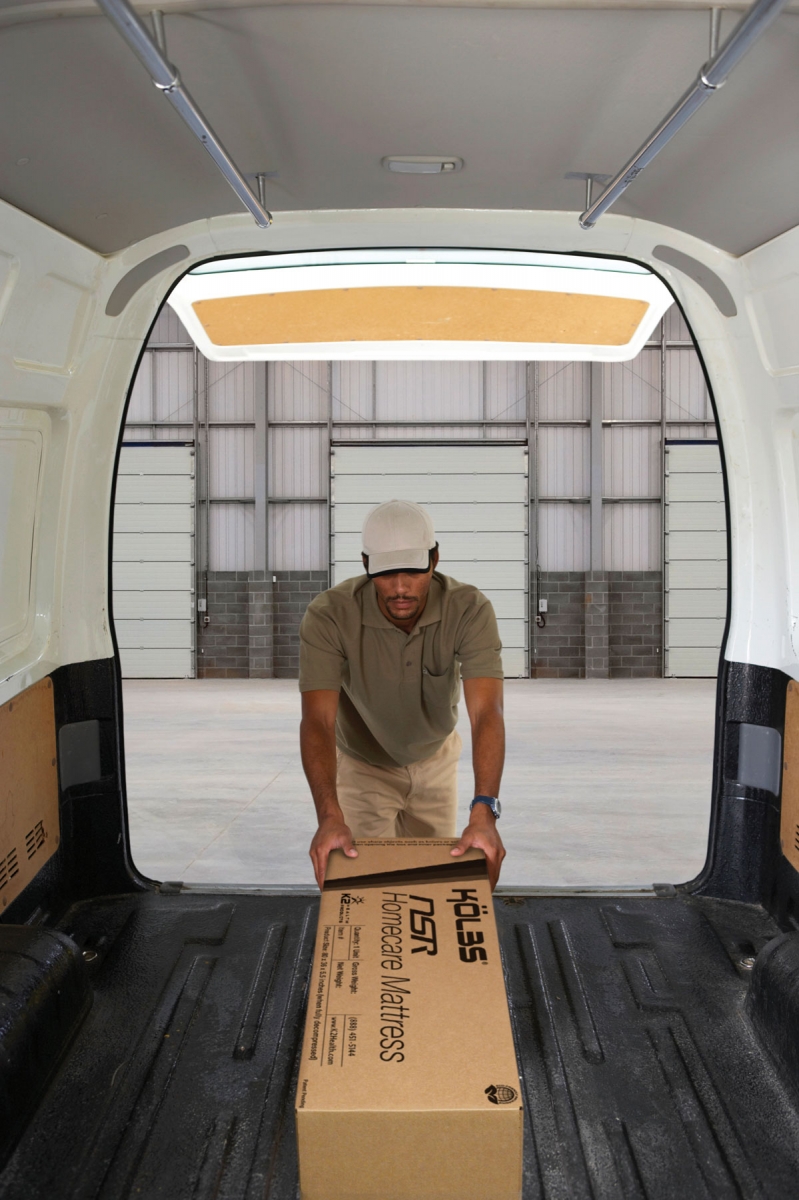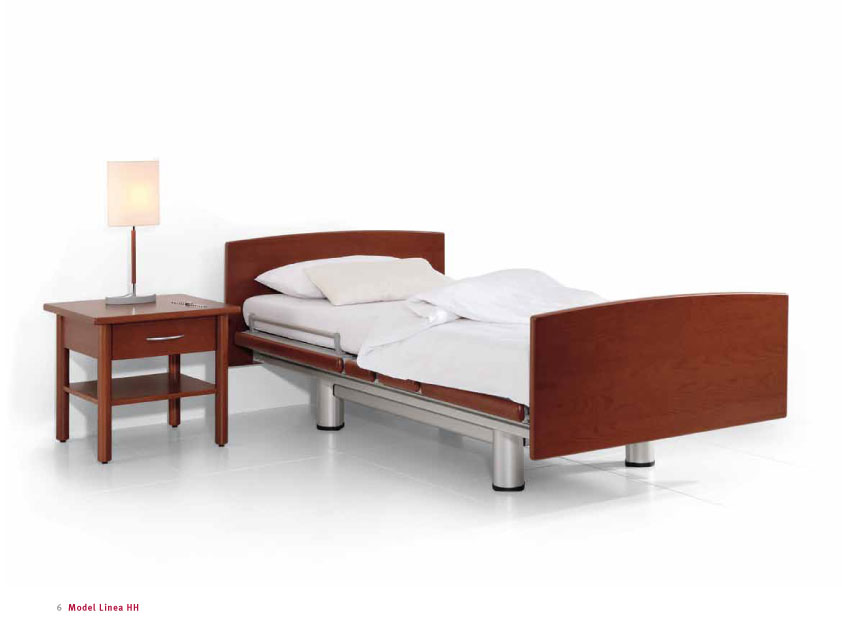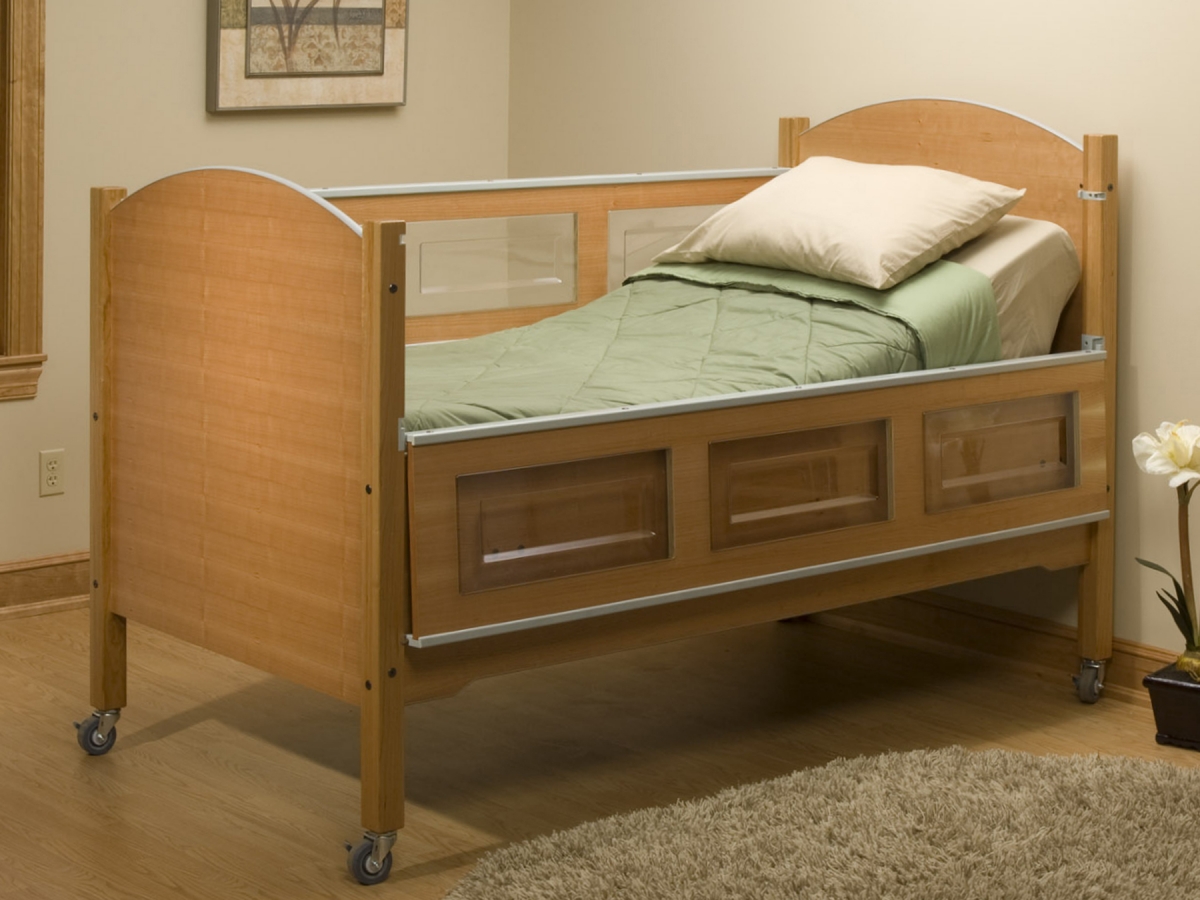Competitive bidding is dampening the profitability of bedding and support surface products for some HME providers, but experts see opportunities in cash sale categories, especially related to the expanding baby boomer population. So it’s important for providers to understand bed quality and price.
“A mattress isn’t just a mattress,” said Mark Hudson of Hudson Medical. Providers should become more educated about the various types of mattresses, such as inner-spring, foam, fiber and air, he said.
Most providers understand the cost considerations. Medicare allowables for hospital beds dropped 32 percent in the Round 1 Rebid, going from $127.12 to $80.35. And, Hudson sees a deeper problem—Medicare reimbursements do not accurately reflect the levels of care related to the sleep surfaces category.
“We should do a better job of categorizing patients according to needs,” he said. “There is a big difference between the lower-end model and the higher-end products.”
Since Medicare reimburses for a bed package, providers have often migrated toward lower-cost inner-spring mattresses. Nonetheless, a few years ago, foam and fiber mattresses became more common and they offer pressure-reduction benefits.
For example, among Hudson Medical’s products is the Serenity Mattress. It provides a “sculptured” foam surface and pressure redistribution in the head and shoulders, torso and lower extremities area as well as support, ventilation and comfort. Hudson is well known for its support surfaces and gel overlays (Pressure-eez).
Hudson said that despite the trend toward lower-cost products, he also sees a counter-trend toward more expensive support surfaces that are more efficacious. They can bring better medical outcomes that more than offset their higher cost, he says.
In some cases, dealers are even providing a higher quality mattress at a loss to build good will among patients and referral sources, Hudson said.
“It’s a tough business for these DME dealers, being squeezed from all sorts of angles,’’ he said. “In the long run, higher-quality mattresses minimize costs by providing a better medical outcome.”
Judging Mattress Quality
It can be difficult to compare bed quality, Hudson said. “Two pieces of foam can look and feel the same and one may be five times the cost. When you make mattresses, I can make it very expensive or very inexpensive, but the difference may not be obvious.”
Hudson says more education is needed about the differences of foam densities and indentation force deflection (ILD) values, which is a measure of how much weight is supported.
Density refers to the air content of the foam and can be shorthand for foam quality, but ILD is a physical measurement of firmness, which varies based on the chemical makeup of the foam.
In the homecare market, mattress foam selection is always a balance of “wants” versus price/value because budgets are limited.
Hudson sees a trend toward more bariatric products, and the company often receives requests for mattresses with 500- or 700-pound capacity, even though there is no separate reimbursement for bariatric mattresses.
Some HME providers are missing out by not realizing that many patients may qualify for products in addition to those listed by a referral source, Hudson said. For example, many Medicare patients may require or could benefit from a Group I overlay. Anyone who is completely immobile would qualify automatically, and other factors listed by Medicare can also determine the need for an overlay.
Also, existing patients should be reevaluated and may qualify for Group II products if their condition deteriorates. Documentation is paramount, and HME providers should take the initiative to follow up with patients to check on their condition and urge them to consult with doctors or social workers about any changes.
“Providers often don’t do a lot of follow-up,’’ Hudson said. “They are busy and there isn’t a lot of time, but it can assist the patient and also help the provider’s bottom line.”
Cash Sales from Adjustable Beds
The typical customer for an HME provider is a perfect demographic for cash sales of high-quality, electrically adjustable beds, and most providers are hungry for cash sales as reimbursements and profits drop.
 Flex-A-Bed supplies adjustable U.S.A.-made beds through DMEs as well as furniture stores. The high-quality beds use Linak actuators, which are well regarded in the hospital bed market, and Flex-A-Bed has a channel of exclusive dealers with protected territories.
Flex-A-Bed supplies adjustable U.S.A.-made beds through DMEs as well as furniture stores. The high-quality beds use Linak actuators, which are well regarded in the hospital bed market, and Flex-A-Bed has a channel of exclusive dealers with protected territories.
To boost cash sales, Flex-A-Bed provides point-of-sale materials, videos and other marketing materials as well as a generous co-op advertising program.
“I think the reasons that home health care stores do well selling our beds is that they get clientele looking for other items—maybe they have sleep apnea,” said Max Morrison, president of Flex-A-Bed.
HME providers also have a better understanding of customer needs than big-box retailers, who are also more likely to sell lower-quality imports, Morrison noted.
The most popular item for DME dealers is Flex-A-Bed’s Hi-Low model, which is especially attractive to the mobility challenged, who may need the bed at a specific height for easy entry and exit. Flex-A-Bed also offers Premier and Value-Flex models.
Craftmatic Reaching HMEs
Consumers often associate adjustable beds with the brand Craftmatic, and 2012 will be the year that the brand will extend its sales to HME providers, said Eric Kraftsow, Craftmatic’s vice president, wholesale.
“For the first time ever this year we are going to wholesale our adjustable beds to medical providers at a price that makes sense for them and the end-user,” Kraftsow said. “This will be a game changer for medical providers and an area of substantial growth for us.”
He says offering a recognizable brand will boost sales.
“We have never made a true effort to be a major player in this segment of the marketplace,” Kraftsow said.
The key to meeting customer needs is to offer the best choice related to size, options and “mattress feel,” he said.
“We don’t have a love affair with any particular mattress other than what is right for the end-user, whether it is coil spring, latex or memory foam, soft or firm,” he said. Kraftsow points to improvements in adjustable base designs, such as recessed motors and easily adjustable heights. Adjustable beds come in all sizes, not just in twin as some people think, Kraftsow emphasized.
More Room in the Van
K2 Health Products offers the Kolbs NSR mattress that can be coded for any homecare bed and takes up little room in a delivery vehicle. The “super-compressed” mattress comes in a 14-by-14-by-36-inch box—all the air is squeezed out of the foam, and it is rolled up in a tube shape for easy delivery. When unpacked, the mattress can decompress within 30 minutes—just enough time to set up the bed frame.
 In addition to ease of delivery, the mattress provides greater comfort and better pressure prevention than inner-spring mattresses, said Moshe Klerer of K2 Health Products, which unveiled the mattress at 2011’s Medtrade Spring.
In addition to ease of delivery, the mattress provides greater comfort and better pressure prevention than inner-spring mattresses, said Moshe Klerer of K2 Health Products, which unveiled the mattress at 2011’s Medtrade Spring.
Klerer said there is a general trend away from inner-spring mattresses and toward foam because of longer mattress life. Crunching and expanding springs can eventually break through during the expected five-year mattress lifespan.
HME providers should manage expectations about the differences in mattress quality an end-user can expect from a “hospital bed” mattress, Klerer said. Customers may be accustomed to a high-end pillow-top mattresses costing more than $1,000. However, Klerer said a hospital bed mattress “can’t be constructed in the same manner as a consumer mattress” because of the need to adjust the bed to various positions.
He said providers may be missing sales opportunity related to gel overlays because of the need for extra Medicare paperwork to document the medical need.
“Don’t be lax in documentation,” Klerer said. K2 Health Products offers a gel overlay that has 15 individual bladders so that the gel won’t migrate.
“A provider should be more proactive and educate facilities about the products the patient needs,” Klerer said. “We have a (gel overlay) product that can help prevent bed sores. Facilities and referral sources may not be aware of what’s out there in terms of products to improve patient outcomes.”
From Institutional to Fine Furniture
Some hospital beds take on the look of fine furniture, amid patient demand for products with a less institutional style that fit into their home’s décor. The Völker bed, imported from Germany and sold through HME dealers by Hertz Supply Co., is one example. “We have been selling this bed for 16 years through direct sales and DME dealers,” said Jeff Hertz, president of Hertz Supply Co.
 Features such as hideaway assist rails and castors concealed under the legs minimize the institutional appearance of a bed that is fully adjustable, including height, back and leg adjustments and a “comfort sitting position.”
Features such as hideaway assist rails and castors concealed under the legs minimize the institutional appearance of a bed that is fully adjustable, including height, back and leg adjustments and a “comfort sitting position.”
The bed is made of fine wood, and offers quality that makes consumers feel as if they are purchasing a piece of fine furniture. HME providers looking to increase cash sales have embraced the Völker line, Hertz said.
“The primary user would be someone with a long-term disability who wants to have a piece of furniture rather than a piece of medical equipment,” Hertz said.
A Völker bed makes a great centerpiece for a showroom, he suggested.
Keeping Children Safe in Bed
Pediatric beds are another opportunity for HME providers, and SleepSafe Beds offers products that provide a safe sleep environment for children. The beds eliminate the risks of burrowing, entrapment and pinch points that can cause suffocation; and higher bed rails, up to 37 inches, can restrict activity and enable parents of autistic children, for example, to relax, knowing their children are safe. The beds feature safe, medical-grade, high-density padding; higher-quality Virginia wood; and Plexiglass windows in the safety rails.
The private insurance-driven niche has benefited mostly from word-of-mouth marketing by satisfied parents.
 “Our network of clientele speaks to each other, through websites and Facebook,” said Al Flora, sales manager of SleepSafe Beds. “The most rewarding part is when you speak to the parents—they tell us they have actually slept for the first time. They feel comfortable leaving their kids in their beds without them getting hurt. It’s a pleasure when they call you. It’s a wonderful market to be in—we are making a living and truly helping people.”
“Our network of clientele speaks to each other, through websites and Facebook,” said Al Flora, sales manager of SleepSafe Beds. “The most rewarding part is when you speak to the parents—they tell us they have actually slept for the first time. They feel comfortable leaving their kids in their beds without them getting hurt. It’s a pleasure when they call you. It’s a wonderful market to be in—we are making a living and truly helping people.”
Some customers may be shocked by the price, but there is much hidden value in a bed that helps provide a break from the 24-hour care needed for an autistic child, Flora said.
SleepSafe Beds also offer Assured Comfort beds, commonly sold to the institutional market. “People don’t realize how important sleep is,” Flora said. “I didn’t until I started working here.”




